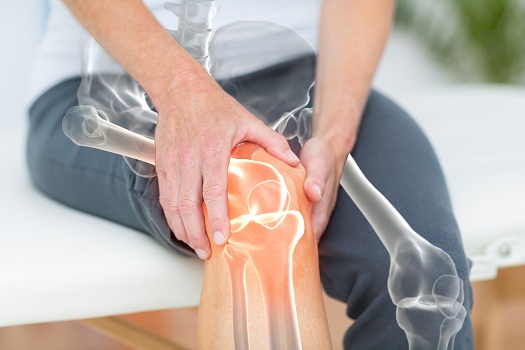Sciatica is a common nerve condition that causes pain, tingling, and weakness in the lower back, buttocks, and legs. While it primarily affects the sciatic nerve, many people wonder: Does sciatica cause knee pain? The answer is yes—sciatica can lead to knee discomfort due to nerve compression and altered movement patterns.
In this article, we’ll explore how sciatica affects the knee, the symptoms to look out for, and the best ways to find relief.
How Sciatica Can Cause Knee Pain

The sciatic nerve is the longest nerve in the body, running from the lower spine through the buttocks and down each leg. When it becomes compressed or irritated—often due to a herniated disc, spinal stenosis, or muscle tightness—it can cause pain that radiates down the leg, sometimes affecting the knee.
Knee pain from sciatica can occur due to:
- Nerve Compression – Pressure on the sciatic nerve can cause referred pain in the knee.
- Weak Leg Muscles – Sciatica-related muscle weakness can lead to knee instability.
- Gait Changes – Sciatic pain may alter how you walk, putting excess strain on the knee joint.
Sciatica vs. Other Knee Pain: How to Tell the Difference
Not all knee pain is caused by sciatica. Here’s how to differentiate between sciatic knee pain and other common knee conditions:
| Feature | Sciatica-Related Knee Pain | Knee Joint Pain (e.g., Arthritis, Meniscus Tear) |
| Pain Location | Radiates from the lower back down the leg to the knee | Localized to the knee joint |
| Numbness & Tingling | Common, especially in the leg and foot | Uncommon |
| Muscle Weakness | Possible in the thigh, knee, or leg | Usually absent |
| Pain with Spine Movement | Worsens with bending, sitting, or standing for long periods | Not affected by back movements |
| Pain When Pressing the Knee | No tenderness in the knee joint | Knee feels tender when touched |
Symptoms of Sciatica-Related Knee Pain
If sciatica is causing your knee pain, you may experience:
- Sharp, burning pain in the knee, thigh, or lower leg
- Numbness or tingling in the knee or surrounding areas
- Weakness in the leg, making it difficult to walk or stand
- Pain that worsens with sitting, standing, or bending
Best Ways to Relieve Sciatica-Related Knee Pain
If sciatica is causing your knee pain, addressing the root cause—nerve compression—is key. Here are effective treatment options:
1. Stretching & Exercise
Sciatica-friendly stretches can relieve nerve pressure and improve flexibility:
- Piriformis Stretch – Loosens tight muscles pressing on the sciatic nerve.
- Hamstring Stretch – Reduces tension in the back of the leg.
- Glute Bridges – Strengthens muscles supporting the spine and knees.
2. Proper Posture & Ergonomics
- Maintain good posture when sitting or standing.
- Use a lumbar support cushion if you sit for long hours.
- Avoid crossing your legs, which can worsen sciatic nerve compression.
3. Knee Braces for Support
A knee brace can help by:
- Providing stability to weak or unstable knees.
- Improving alignment to reduce strain.
- Enhancing comfort during movement.
4. Heat & Ice Therapy
- Ice packs reduce inflammation and numb sharp pain.
- Heat therapy relaxes tight muscles pressing on the nerve.
5. Pain Management & Medication
- Over-the-counter pain relievers like ibuprofen can reduce inflammation.
- Topical pain creams may offer localized relief.
6. Chiropractic Care & Massage Therapy
- A chiropractor can help realign the spine to relieve sciatic nerve pressure.
- Massage therapy loosens tight muscles contributing to nerve compression.
Also Read: Loud Pop In Knee Followed By Pain And Swelling – Causes, Treatment, and Recovery!
When to See a Doctor
If knee pain from sciatica worsens or does not improve with home treatments, seek medical attention if you experience:
- Severe, persistent pain that affects daily activities.
- Numbness or weakness that worsens over time.
- Difficulty walking or standing.
- Loss of bowel or bladder control (this may indicate a serious condition requiring immediate care).
FAQ’s
1. Can sciatica cause knee pain?
Yes, sciatica can cause knee pain due to nerve compression, muscle weakness, and altered movement patterns.
2. How do I know if my knee pain is from sciatica?
Sciatic knee pain is often accompanied by numbness, tingling, and weakness in the leg, and worsens with back movements like bending or prolonged sitting.
3. What does sciatica-related knee pain feel like?
It often feels like a sharp, burning pain that radiates from the lower back down to the knee, sometimes with tingling or weakness.
4. Can sciatica cause knee instability?
Yes, sciatica can weaken leg muscles, leading to knee instability and difficulty walking or standing.
5. What is the best way to relieve sciatica-related knee pain?
Stretching, proper posture, knee braces, heat/ice therapy, and pain management can help reduce symptoms.
6. Can a knee brace help with sciatic knee pain?
Yes, a knee brace can provide support and reduce strain, but addressing the underlying nerve compression is crucial for long-term relief.
7. When should I see a doctor for sciatic knee pain?
Seek medical attention if you experience severe pain, worsening numbness or weakness, difficulty walking, or loss of bladder/bowel control.
8. Can physical therapy help with sciatic knee pain?
Yes, physical therapy can improve muscle strength, flexibility, and posture to relieve sciatic nerve pressure and reduce knee pain.
Final Thoughts
Sciatica can cause knee pain due to nerve irritation, muscle weakness, and altered movement patterns. Identifying the root cause and using the right treatment approach—stretching, strengthening exercises, proper posture, and pain management—can help relieve discomfort and restore mobility. If your knee pain persists, consult a doctor for a personalized treatment plan.
Related Post
- Zimatejigemo – Unlocking the Fusion of Creativity, Identity, and Innovation!
- Tinaypimatelate – The Revolutionary Concept Shaping the Future of Innovation!
- Limhuloxidpov – A Complete Guide to Understanding This Unique Concept!
- Zaxtexporoz – Exploring the Emerging Concept of Innovation and Digital Transformation!
- Lekulent – The Breakthrough Wellness Solution Taking the Health World by Storm!






